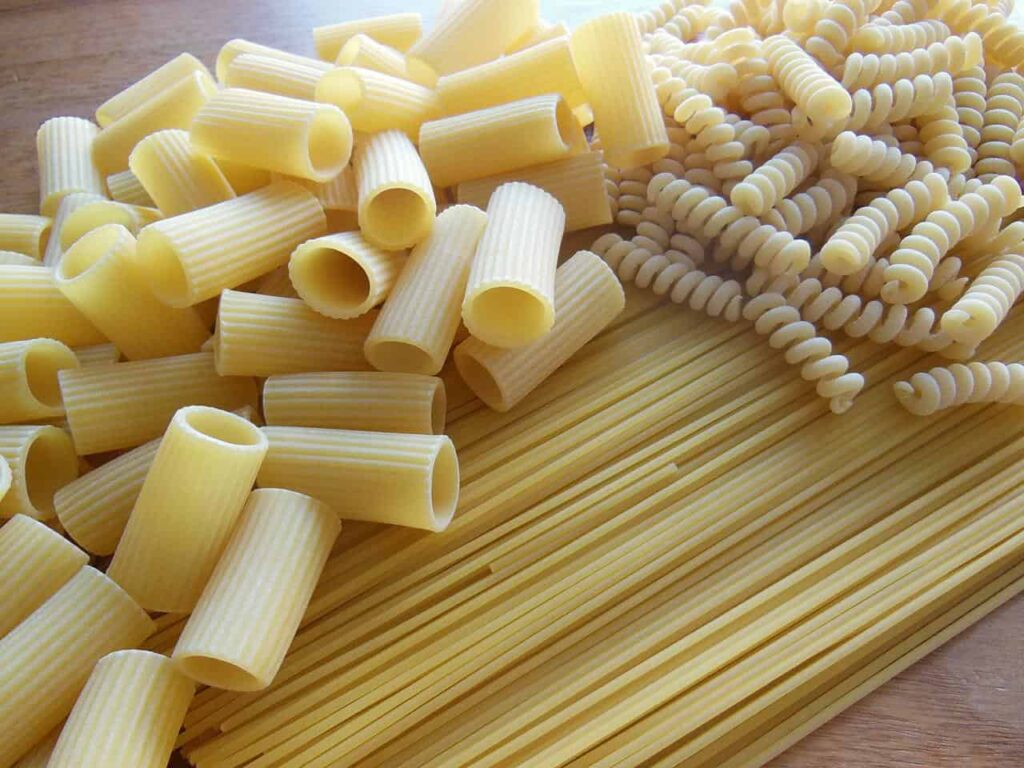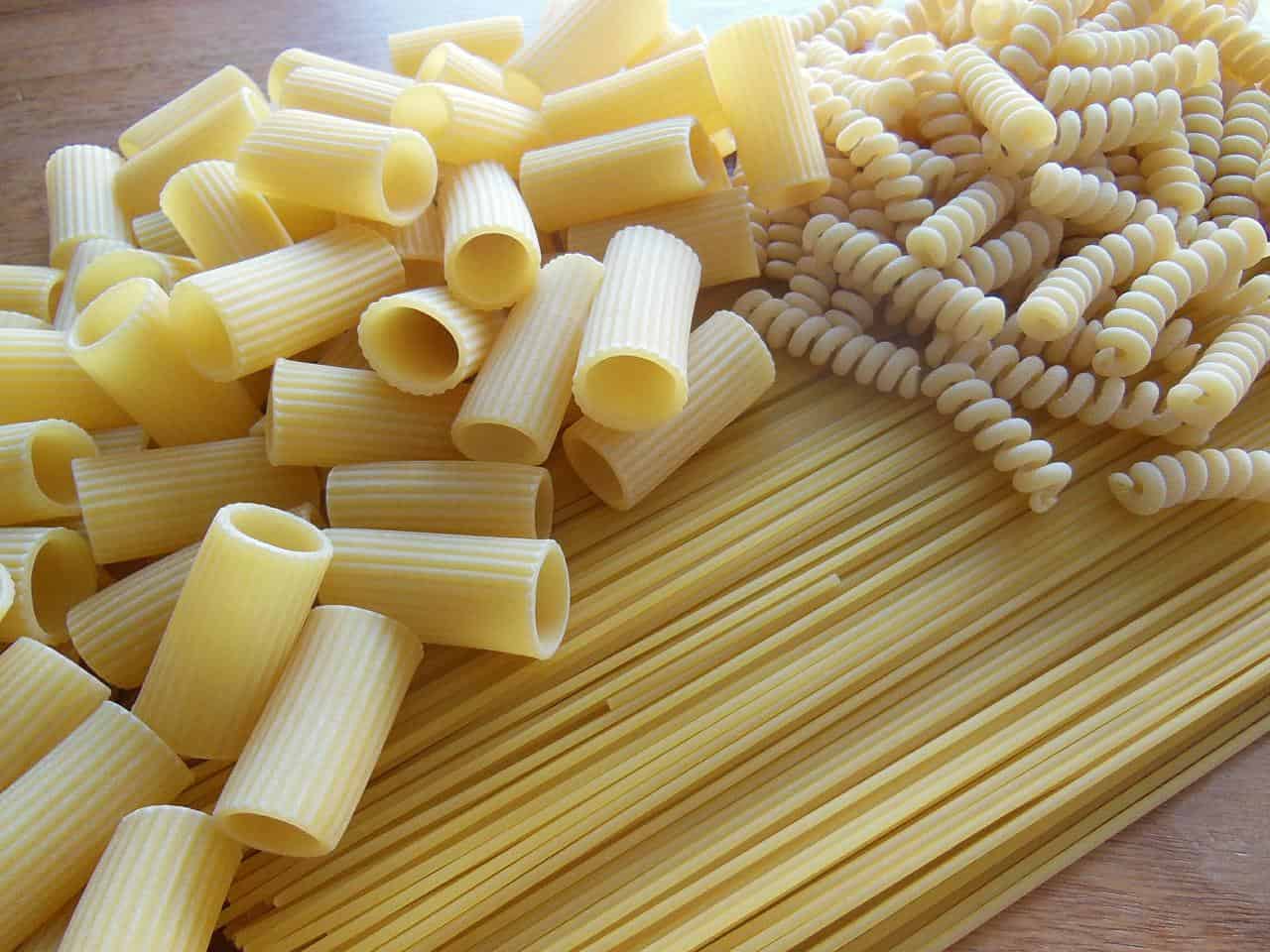While cooking pasta, did you ever sneak some raw ones in and eat them? Don’t worry, most of us have had raw pasta sometime in life! It is like when your mother making cookies and the dough is right within reach. It’s impossible not to have some.
This sneaking around may seem fun, but it is far more harmful than you realize. The US Centers for Disease Control and Prevention (CDC) strictly advises against the consumption of rough dough. Not only is it not treated for bacteria, it also poses serious health threats. The infection will subtly enter your body and spread before you even realize it.
This article will thoroughly examine the consequences of consuming raw pasta and how you can combat it.

Can you eat raw pasta? Can You Get Sick From Eating Raw Pasta?
Yes. Eating raw pasta in huge quantities is detrimental to your health and causes severe infections. The biggest threat posed by its consumption is food poisoning.
However, the risk is only prominent when you eat a large amount. Eating a stray pasta or two isn’t going to deteriorate your health. but still not recommended.
Digesting raw pasta is also very difficult. The pasta is covered with starch, a substance the stomach finds hard to digest.
And when water is added to the equation, digestion becomes even more complicated. Hence, when you eat in large quantities, the starch will remain in your stomach and cause discomfort.

Risks of Eating Raw Pasta
The health risks concerned with eating raw pasta are:
Digestive Issues
Raw pasta has a rough texture with starch surrounding it, making it hard to digest. After eating it, the body will not digest it right, leading to constant discomfort, particularly when it reaches the colon.
Besides the pain, you’ll also have trouble defecating. The starch makes digestion hard and causes blockages in the intestines. If you consume it in large amounts, the blockage can become fatal.
Additionally, raw pasta is a rich source of carbohydrates, giving you energy. However, while they’re essential for the body, a considerable quantity can even lead to death.
Dietary Issues
Raw pasta homes lectins, phytates, and tannins that causes dietary issues. This is how these anti-nutrients harm your body:
Lectins
Raw pasta, legumes, and grains are known sources of lectins. They cling to the walls of the digestive tract and lead to problems like vomiting, stomach discomfort, and diarrhea. Some people even complain about auto-immune issues.
The milder effects of lectins include gas and stomach bloating. Since they coat the walls of the digestive tract, they can even stop mineral absorption. These minerals include phosphorus, calcium, iron, and zinc.
Phytates
Phytates are found conspicuously in grains and legumes. It binds the minerals like iron and calcium together, making the absorption process difficult. They also interfere with the essential enzymes required to digest food.
These enzymes are requisite in catalyzing chemical reactions. However, the reactions keeping us alive may never occur with phytates interfering.
Tannins
Tannins are known to bind proteins and form complexes. These complexes make nutrient absorption difficult for our bodies and hinder the enzymes’ process.
Bacterial Infection
Raw pasta contains an abundance of bacteria accumulated during processing or storage. If the bacteria aren’t removed, they can cause food poisoning. They’re usually harmless and won’t cause severe harm to people. However, people with a weaker immune system are prone to its risks. Pregnant women should also avoid eating raw pasta.
Salmonella Infection
Salmonella infection risk is quite common in pasta, with egg as an ingredient. The symptoms can develop 6 hours after consumption. But some people have reported that it grows even after weeks for them. The symptoms can last anywhere between 4 to 7 days.
E Coli Infection
E Coli is the bacteria responsible for food poisoning. Depending on the person’s immune system, the symptoms can start showing up within a day or even 10 days later.
Symptoms include:
- Diarrhea (with blood)
- Vomiting
- Stomach cramps
- Fever

Cooking Time for Common Pasta Shapes
Pasta is available in different shapes and sizes. The recommended cooking time for common shapes available in the kitchen is:
| Pasta Shape | Cooking Time |
| Bumbola | 12 to 14 mins |
| Casarecci | 10 to 12 mins |
| Conchiglie (pasta shells) | 10 to 12 mins |
| Farfalle (butterfly pasta, bow ties) | 8 to 10 mins |
| Fusilli (pasta twists) | 10 to 12 mins |
| Fusilloni | 13 to 15 mins |
| Medium egg noodle | 6 to 8 mins |
| Pizzichi | 6 to 8 mins |
| Radiatori | 10 to 13 mins |
| Rotelle (wagon wheels) | 9 to 12 mins |
| Spiralini | 9 to 12 mins |
| Umbricelli | 10 to 12 mins |
How to Make Sure Your Pasta Is Cooked Enough?
The best way to gauge whether the pasta has been cooked is by tasting it. It is cooked adequately if it is firm yet easy to chew. Do not always rely on the timings mentioned in the package – it changes with the quantity and heat used.
However, take some time before tasting it. If it is still raw, you’ll be at risk of contracting the problems presented by uncooked pasta. If the pasta gets gummy and starts sticking to the walls, you’ve overcooked it.
You can also check the status by pinching it between your fingers or cutting using the pan’s wall. Hardness indicates that it is still uncooked, while some firmness shows that it has been boiled. If it is hard to cut or has a powdery texture, cook it more. Make sure that it passes the fork test.
Can You Get Food Poisoning From Raw or Undercooked Pasta?
Consumption in small quantities is pretty harmless for healthy people. However, food poisoning can be a problem for those who consume large amounts or have weaker immune systems. Raw pasta carries the E Coli bacteria that can cause food poisoning.
Once it enters the system, it causes bloody diarrhea, severe vomiting, high fever, and unbearable stomach cramps. The only solution is to avoid consuming too much or never eating it raw.
Tips To Safely Consume Raw Pasta
If you cannot control your cravings for raw pasta, ensure that you’re doing it safely.
- Make sure to buy pasta labeled as de Cecco or Fresh. They’re safer to consume raw.
- If you cannot find Fresh, then you try looking for one labeled Enriched. The label means that it has been fortified and safe to eat raw.
The Bottom Line
In conclusion, raw pasta and the risks it poses are best avoided, even if you eat only a little of it or are healthy. So, try to avoid giving in to your cravings. Instead, try making some delicious, saucy (and cooked) pasta that will suit your taste buds and stomach.

